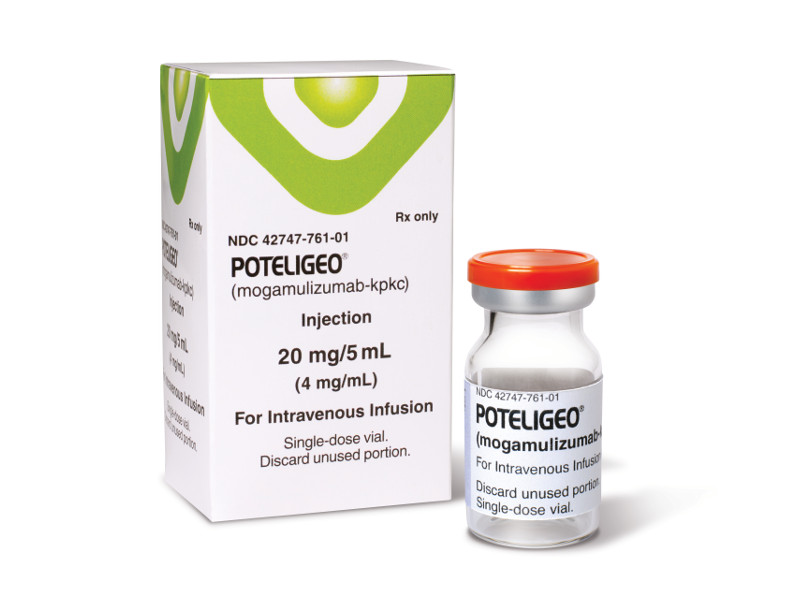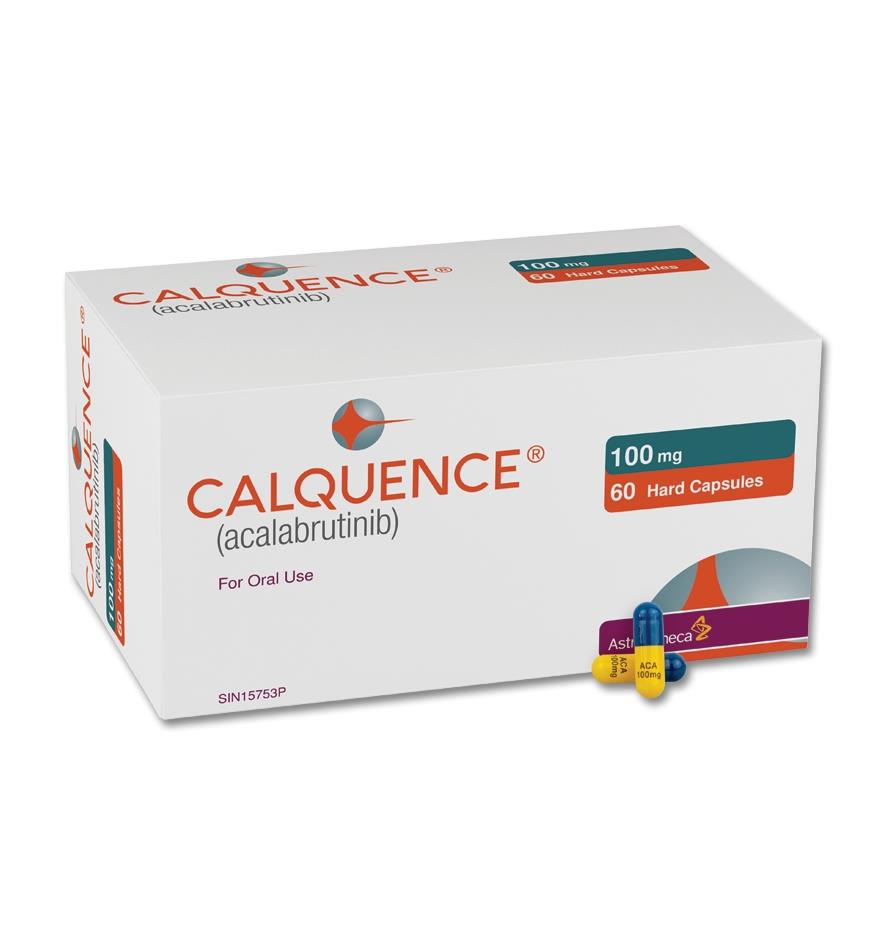Poteligeo (mogamulizumab) vs Calquence (acalabrutinib)
Poteligeo (mogamulizumab) vs Calquence (acalabrutinib)
Poteligeo (mogamulizumab) is a monoclonal antibody used for the treatment of certain types of cutaneous T-cell lymphoma (CTCL), specifically for patients who have received at least one prior systemic therapy. It targets the C-C chemokine receptor type 4 (CCR4) and is designed to enhance the immune system's ability to fight cancer cells. In contrast, Calquence (acalabrutinib) is a Bruton's tyrosine kinase (BTK) inhibitor indicated for the treatment of mantle cell lymphoma (MCL) in patients who have received at least one prior therapy, and for chronic lymphocytic leukemia (CLL) or small lymphocytic lymphoma (SLL). It works by blocking BTK, a key molecule in the B-cell receptor signaling complex, which plays a crucial role in the survival and proliferation of B cells. The choice between these medications would depend on the specific type of lymphoma a patient has, as they are approved for different indications and work through distinct mechanisms.
Difference between Poteligeo and Calquence
| Metric | Poteligeo (mogamulizumab) | Calquence (acalabrutinib) |
|---|---|---|
| Generic name | mogamulizumab | acalabrutinib |
| Indications | Adult patients with relapsed or refractory mycosis fungoides or Sézary syndrome | Adult patients with mantle cell lymphoma, chronic lymphocytic leukemia, or small lymphocytic lymphoma |
| Mechanism of action | CCR4-directed monoclonal antibody | Bruton's tyrosine kinase inhibitor |
| Brand names | Poteligeo | Calquence |
| Administrative route | IV infusion | Oral |
| Side effects | Rash, infusion reactions, fatigue, diarrhea, musculoskeletal pain | Headache, diarrhea, muscle pain, bruising, and rash |
| Contraindications | None known | None known |
| Drug class | Monoclonal antibody | Small molecule kinase inhibitor |
| Manufacturer | Kyowa Kirin | AstraZeneca |
Efficacy
Poteligeo (Mogamulizumab) for Treating Lymphoma
Poteligeo (mogamulizumab) is a monoclonal antibody that has been approved by the U.S. Food and Drug Administration (FDA) for the treatment of adult patients with relapsed or refractory mycosis fungoides (MF) or Sézary syndrome (SS), which are types of cutaneous T-cell lymphoma (CTCL). This medication targets the CC chemokine receptor 4 (CCR4) expressed on the surface of some cancer cells. Clinical trials have demonstrated that mogamulizumab can significantly improve progression-free survival in patients with MF and SS compared to previous standard therapies. However, the response to treatment can vary among individuals, and not all patients with lymphoma will be eligible for treatment with Poteligeo.
Calquence (Acalabrutinib) for Treating Lymphoma
Calquence (acalabrutinib) is a Bruton's tyrosine kinase (BTK) inhibitor used in the treatment of certain types of lymphoma. It is specifically indicated for the treatment of adults with mantle cell lymphoma (MCL) who have received at least one prior therapy. Acalabrutinib works by blocking BTK, which is a key signaling molecule in the B-cell receptor pathway involved in the proliferation and survival of malignant B cells. Clinical studies have shown that acalabrutinib has a high overall response rate in patients with relapsed or refractory MCL, leading to its approval as a second-line treatment for this condition.
Comparative Efficacy in Lymphoma
When comparing the efficacy of Poteligeo and Calquence, it is important to note that they are used to treat different subtypes of lymphoma and work through distinct mechanisms of action. Therefore, direct comparisons of efficacy are not applicable. Each medication has shown efficacy in its respective indication, with Poteligeo being used for CTCL and Calquence for MCL. The choice of treatment depends on the specific type of lymphoma, the stage of the disease, previous treatments, and the patient's overall health status.
Considerations for Use in Lymphoma Treatment
While both Poteligeo and Calquence offer therapeutic options for patients with certain types of lymphoma, their use must be carefully considered by healthcare professionals. Factors such as potential side effects, drug interactions, and individual patient factors must be weighed against the benefits of treatment. Ongoing research and clinical trials continue to evaluate the efficacy and safety of these drugs, potentially expanding their use to other forms of lymphoma or in combination with other therapies. As with any medication, the decision to use Poteligeo or Calquence should be made in consultation with a healthcare provider who specializes in the treatment of lymphoma.
Regulatory Agency Approvals
Poteligeo
-
European Medical Agency (EMA), European Union

-
Food and Drug Administration (FDA), USA

-
Therapeutic Goods Administration (TGA), Australia

Calquence
-
European Medical Agency (EMA), European Union

-
Food and Drug Administration (FDA), USA

-
Health Canada

-
Pharmaceuticals and Medical Devices Agency (PMDA), Japan

-
Therapeutic Goods Administration (TGA), Australia

Access Poteligeo or Calquence today
If Poteligeo or Calquence are not approved or available in your country (e.g. due to supply issues), you can access them via Everyone.org.
How it works

Make an enquiry
Choose the medicine you want to buy, answer a couple of questions, and upload your prescription to speed things up. We’ll get back to you within 24 hours.


Make an enquiry
Choose the medicine you want to buy, answer a couple of questions, and upload your prescription to speed things up. We’ll get back to you within 24 hours.


Breeze through the paperwork
We'll guide you through the required documents for importing unapproved medicine, ensuring you have all the necessary information.


Get a personalized quote
We’ll prepare a quote for you, including medicine costs and any shipping, administrative, or import fees that may apply.


Receive your medicine
Accept the quote and we’ll handle the rest - sourcing and safely delivering your medicine.

Some text on this page has been automatically generated. Speak to your physician before you start a new treatment or medication.
Let's talk
If you have any questions, call us or send us a message through WhatsApp or email:
Contact us




